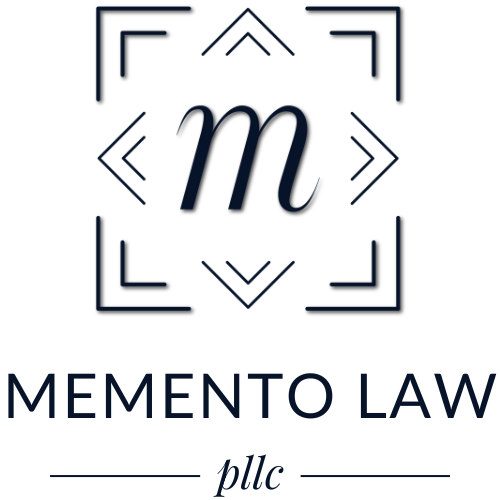3 Ways to Manage Workplace Conflict
Handling workplace conflict can be one of the most difficult aspects of running a business. While achieving business goals may require talent and time, managing people and their personalities is a completely different ball game. No matter how good the management is, disputes are bound to arise in the workplace due to differences in values, poor communication, personality clashes, and unhealthy competition.
If left unchecked, minor disputes can escalate into major conflicts that can significantly affect the morale and productivity of the entire company and ultimately lead to increased turnover. Therefore, it is essential to have a solid process in place for effectively managing staff conflict. Here are three steps that can help you effectively manage workplace conflict.
Respond Promptly
As a small business owner, you might feel uncomfortable getting involved with employee disagreements, but ignoring a problem can cause more significant trouble down the road. If the issue isn’t addressed promptly, emotions can build and the conflict may escalate beyond its immediate cause. Unresolved issues tend to fester and may even compound over time, erupting in an emotional outburst or passive-aggressive behavior.
Instead, address any conflict as soon as you become aware of it and take solid steps to resolve it in order to keep emotions calm and the workplace as drama free as possible. The sooner you address the conflict, the more open-minded your employees will be to work toward a solution.
While you may think you need to confront conflict from a stern or scolding place, you can address many issues by first having a friendly conversation with the people involved, beginning with curiosity. If the issue affects your whole team, such as poor teamwork or rude communication, you can bring up the problem during a team meeting without needing to call out certain individuals.
If the issue does not resolve after addressing it lightly, private conversations can be had with the involved individuals. Most people don’t want to get in trouble with their boss, so many issues can be resolved when confronted early on by a supervisor.
Serious conflicts, especially conflicts involving harassment or discrimination should be dealt with privately and seriously with the involved employees according to your employee handbook.
All discussions about the issue should be noted, and any occurrences of harassment or discrimination, as well as any follow-up disciplinary actions, should be formally documented.
Identify the Cause of the Disagreement
Many workplace conflicts are the result of relatively small or petty issues, but these small interpersonal problems can become major issues when two conflicting people need to interact with each other every day in the workplace.
To resolve an issue quickly, identifying the cause of the dispute is crucial to resolving it. Conflicts are rarely as simple as they seem on the surface and often are complicated by other aggravating factors like conflicting personalities or office competition. Get both parties to agree on what the conflict is actually about and then identify the needs that aren't being met on both sides. Listen carefully to both parties and sort out the facts of the dispute without making any judgments.
It's best to acknowledge that we all have different opinions and points of view. Try to get each side to understand and respect the other's perspective, even if they're completely opposite of one another.
Don’t Assume - Only State Observable Facts
To stay on neutral ground as your team’s leader, it’s best to state observable facts to avoid the parties from getting defensive or feeling like you’re taking sides. When you make an assumption or judgment, it can make either party feel emotionally upset or may cause the focus of the conversation to switch from productive problem-solving to a “he said/she said” debate.
If you weren’t able to observe the situation firsthand, state the facts that have been disclosed to you. It’s also beneficial to have a spirit of curiosity to learn more about the situation instead of jumping to conclusions. For example, you could say something like, “While I wasn’t there to witness it, my understanding of the situation is XZY occurred. What can you tell me about this?”
Find A Middle-Ground Solution and Stick to It
Once the conflict has been identified, discuss openly and respectfully what a solution might look like. Work towards a solution where each side gives a little and gets a little. Be creative in searching for solutions, and develop mutually acceptable criteria for evaluating these solutions.
Be sure to refer to your employee handbook on how your company deals with conflict and any policies that affect the desired outcome, such as behavior expectations and conflict review. A well-written employee handbook makes workplace expectations clear from the beginning and helps back up whatever plan of action you take.
If you don’t have an employee handbook - you need one! We can help you create one that provides a roadmap for handling conflict in your company and that will help protect you and your company from litigation if a workplace conflict becomes legal.
Once a solution has been decided on, each side should agree to take responsibility for whatever actions are required to resolve the issue. Taking responsibility can be done verbally, but having a written agreement might be best. After some time has passed, hold a follow-up meeting to evaluate the success of the solution and make adjustments if necessary.
Supporting Your Business From the Inside Out
Managing staff conflict can be challenging, but it's crucial to maintain a harmonious and productive work environment. If you need extra guidance or support in managing staff conflict, contact me, your Personal Family Lawyer®. I don’t just prepare legal documents for your business - I work alongside you on your path to growing a business and life you love and can help you navigate the legal, financial, and personal challenges that every business is bound to face.
To make sure your business has the foundation it needs to be successful, I offer the LIFT™ Breakthrough Session to make sure you have the Legal, Insurance, Financial, and Tax structures your business needs to thrive while protecting your own assets and interests. From there, I support my clients’ businesses through an ongoing relationship that proactively looks for ways to grow your business and bring it into alignment with your ideal work-life balance.
This article is a service of Ryan Peacock, Personal Family Lawyer®. We offer a complete spectrum of legal services for businesses and can help you make the wisest choices with your business throughout life and in the event of your death. We also offer a LIFT Business Breakthrough Session™, which includes a review of all the legal, financial, and tax systems you need for your business. Call us today to schedule.
The content is sourced from Personal Family Lawyer® for use by Personal Family Lawyer® firms, a source believed to be providing accurate information. This material was created for educational and informational purposes only and is not intended as ERISA, tax, legal, or investment advice. If you are seeking legal advice specific to your needs, such advice services must be obtained on your own separate from this educational material.

